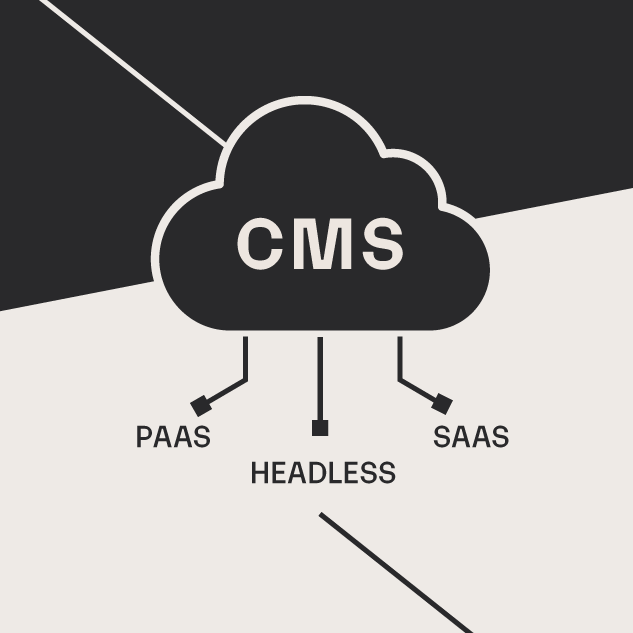7 Tips for Building Rapport With Prospects
Chris Osterhout SVP of Strategy#Digital Marketing, #Inbound Marketing, #Digital Strategy

We offer some useful tips on how salespeople can connect with their prospects using the inbound methodology.
The traditional sales mentality is dead. That might seem like a bold claim, but as with so many other aspects of our lives, the internet has changed the landscape of sales and marketing. Traditional sales methods like cold calls and pushy salesmen are no longer effective now that everyone can find the information they need by doing a Google search.
This drastic shift is the reason inbound marketing has come to fruition. Marketers now look to connect with prospects by creating informative, relevant content that demonstrates the value that they can provide to their potential customers. By delivering the right content to the right people at the right time, they can attract prospects and convert them into customers.
But how does this shift to the inbound methodology pertain to sales? The answer is that it specifically addresses how salespeople build relationships with their prospective clients. One especially helpful tool in this respect is HubSpot’s CRM, which works in conjunction with their Marketing Automation Platform (MAP) to bridge the gap between a sales team and their prospective customers. HubSpot has also launched a new sales methodology and certification that will help salespeople make the shift to inbound.
In our time using the HubSpot CRM, we’ve learned a lot about how a sales team using the inbound methodology can connect with prospects, so we wanted to share some tips for how to build rapport with them, which is ultimately what makes the difference in our connected world.
1. Provide Value
First and foremost, it is incredibly important to provide value to your prospective clients. You need to be able to demonstrate that you have the answers to their questions and the solution to their problems. And this doesn’t just mean value to an organization, but to an individual person. Since you won’t always be talking to an organization’s decision makers, you need to give your prospects the information they need to be able to make a case to their boss for why they should purchase your products or services.
2. Keep It Palatable
Being able to cover all of a person’s wants and needs and close a deal in a single sales call is a thing of the past. Trying to address too many questions at once makes it difficult to provide the most value to prospects, and it makes it difficult for them to understand the amount of value you are providing. People today are busier than ever, so the information you provide to them should be kept to smaller, more easily digestible portions.
3. Provide Strategy
When communicating with a prospect, you can’t just tell them that you have a solution for their problem. You need to make them understand how your products or services will meet their specific needs. If you can draw parallels to existing case studies that have solved for similar requirements, this will not only let them know what you can do, but also provide evidence that you have experience solving problems like the ones they are looking to address.
4. Understand Their Pain
Most people aren’t looking to make change for the sake of making change; they have problems they need to overcome and issues they need to address. Understanding a prospect’s pain points and detailing how your strategy will solve them is essential in building rapport with them.
5. Make A Connection
Rather than giving your prospects a cold, technical description of what you can do for them, you want to let them know that you truly do understand their problems and want to help resolve them in any way you can. Similar to a good doctor’s bedside manner, you want to create an emotional connection that lets them know that helping them is important to you, and that you want to work with them personally to overcome their problems.
6. Build Trust
As you build rapport with your prospects, you want to be sure you’re not just providing a solution because you’re trying to sell them something. Because you’ve made an emotional connection with them, they feel that they can trust you to keep their best interests in mind.
This trust also means possibly not selling them something if it is not the best solution for them. If necessary, you might have to walk away from a potential sale, but since you are working to build rapport with your prospects, knowing that you kept their best interests in mind will ultimately result in creating partnerships that work to the benefit of everyone involved.
7. Do All This Before You Ever Speak To Them
If you’re following the inbound methodology, you can complete the six tips above without ever actually speaking to one of your prospects. Creating contextual, relevant content is a great way to provide value to prospects, deliver information to them in palatable portions, provide a strategy for solving their problems, demonstrate that you understand their pain, make a connection with them, and build trust. Building a relationship with your prospects through digital channels and using personalization to gear your content to their specific needs can help them understand how you can help them solve their problems before you even speak directly to them.
Do you have any questions about how to implement this inbound methodology in your sales and marketing efforts? Do you want to know more about how Diagram can help you follow these tips and build a successful digital strategy? Please contact us; we’d love to work with you!
Image created using vector art Designed by Freepik
Related Posts

Choosing the Right Cloud CMS: Key Factors to Consider
Selecting the right cloud-based Content Management System (CMS) demands a careful balance between budget, technical expertise, and business needs.

You Should Migrate Your CMS to the Cloud. Here's Why.
Thinking about migrating your CMS to the cloud? Here are 6 key benefits to understand.
Results Matter.
We design creative digital solutions that grow your business, strengthen your brand and engage your audience. Our team blends creativity with insights, analytics and technology to deliver beauty, function, accessibility and most of all, ROI. Do you have a project you want to discuss?
Like what you read?
Subscribe to our blog "Diagram Views" for the latest trends in web design, inbound marketing and mobile strategy.
